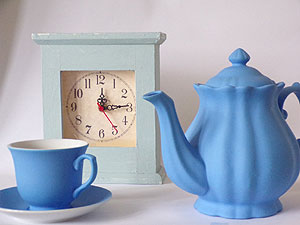A Brief History of Tea and Going Back To Loose Leaf
Our ancestors drank loose leaf tea
The history of tea in England began with the introduction of the beverage by the Dutch around 1660. The British East India Company introduced it to Europe, where it became popular. It was not until around 1706 that drinking tea became fashionable among Britons. Tea became a national drink in 18th-century England, and was initially consumed as a luxury item on special occasions. The British East India Company increased demand for tea in Europe by sending samples to the continent. It also promoted tea consumption in its Asian colonies, including India, China and Japan.
The history of tea is an interesting topic that has been around for centuries. It has gone from being a drink only consumed by royalty and aristocracy to being a popular drink for everyone in society.

Tea was introduced to the English aristocracy in the 17th century by Catherine of Braganza, wife of Charles II. The Portuguese princess had grown up drinking tea in her own country. Katherine of Braganza was the Queen consort of King Charles II of England, Scotland and Ireland. She was a daughter of John IV, King of Portugal and his wife, Catherine of Guimarães. The British aristocracy took tea drinking to new heights in the 19th century, they would often drink 10 cups of tea a day, and it became a social event for them. Tea became popular in the 18th century when the British Empire expanded and tea became an important commodity.
The first country to export tea was India and was also the first country where tea was grown. The British East India Company had a monopoly on Indian Tea and would export it to England in 1793. The first country to export tea to England was China, the first shipment was in 1664.
The first mention of tea being drunk by an Englishman was in 1610 when Thomas Garraway opened his coffee house in London, England and sold it as "the new English drink called tee."
 Grades of Tea
Grades of Tea
In the world of tea, there are a few different grades that a tea can be ranked by. The most common ones are Orthodox Blend, Flowery Pekoe, and Broken Orange Pekoe.
Orthodox Blend is the base grade for all other grades. It's a blend of whole leaf teas with an emphasis on black teas. It's often used in everyday blends or in blends that are marketed for their health benefits.
Flowery Pekoe is the next grade up and it has whole leaf black, green, oolong, and white teas mixed together to create a more complex flavor profile. This is often used in blends that are marketed as luxury items or for their unique flavor profiles.
Broken Orange Pekoe is the third grade up.
When it comes to grading tea leaves, there are four main categories:
1.broken leaf or fannings, 2. dust or tippy golden tips, 3. leaf grades 1-3 (or CTC), 4. whole leaf grades 4-6 (or OP)
The grades of tea are determined by the size, shape, and quality of the leaf.
-
The size of the leaf is determined by how long it has been left to mature on the plant.
-
The shape is determined by how it was picked off the plant.
-
Quality is determined by how much processing it has had to make it ready for drinking.
Loose leaf tea or tea bags? Loose leaf tea is a better tasting tea than teabags because it contains more of the essential oils. Loose leaf tea is also healthier because it doesn't contain any of the chemicals that are used to make teabags. It is common for tea bags to be dunked in hot water for a few seconds, for loose leaf however, the leaves need to be infused for 3 to 5 minutes in order to produce a full flavour.

Two of the most popular teas that are drunk in the UK are English Breakfast and Earl Grey.
English Breakfast Tea is a blend of black teas from the three major tea-growing countries: India, Kenya, and Sri Lanka. The tea is blended to create a rich, full-bodied flavour. The history of English Breakfast tea is not well documented, but it is believed to have originated in the 1800s. English breakfast tea is a popular daily drink in the United Kingdom and in the Commonwealth of Nations. The name is derived from the meal typically served at breakfast time in England, which traditionally includes tea.
Earl Grey is a blend of black tea and bergamot oil, which gives it its distinctive flavour. It was introduced to the British public by Prince Albert in 1860. He loved it so much that he sent crates of it to Queen Victoria, who also loved it.

